Description
Instruction for medical use of VALMAK-H medicine Trade name of VALMAK – N the International unlicensed name Is not present the Dosage form of the Tablet, film coated 80mg/12.5mg, 160mg/12.5mg, 320 mg / 12.5мг, 160mg/25mg, 320mg/25mg Structure One tablet contains active agents: valsartan 80 mg / Hydrochlorthiazidum of 12.5 mg valsartan 160 mg / Hydrochlorthiazidum of 12.5 mg valsartan 320 mg / Hydrochlorthiazidum of 12.5 mg valsartan 160 mg / Hydrochlorthiazidum of 25 mg valsartan 320 mg / Hydrochlorthiazidum of 25 mg, excipients: cellulose microcrystalline (Avicel PH101), krospovidon (Poliplasdon XL), silicon dioxide colloidal anhydrous (aerosil 200), magnesium stearate, structure of a cover: 80/12.5 Opadry pink 03F84641 (gipromelloza – 62.50%, the titan dioxide (E 171) – 24.23%, polyethyleneglycol 8000 (macrogoal) – 6.25%, talc – 5.00%, gland (III) oxide red (E 172) – 1.10%, gland (III) oxide yellow (E 172) – 1.10%), 160/12.5 Opadry brown 03F565001 (gipromelloza – 60.00%, the titan dioxide (E 171) – 12.00%, polyethyleneglycol 8000 (macrogoal) – 10.00%, talc – 5.00%, gland (III) oxide red (E 172) – 13.00%), 160/25mg Opadry brown 03F57311 (gipromelloza – 62.50%, the titan dioxide (E 171) – 12.00%, polyethyleneglycol 8000 (macrogoal) – 6.25%, talc – 5.00%, gland (III) oxide red (E 172) – 2.05%, gland (III) oxide yellow (E 172) – 12.00%, gland (III) oxide black (E 172) – 0.2%.), 320/12.5 Opadry pink 03F540000 (gipromelloza – 62.50%, the titan dioxide (E 171) – 25.81%, polyethyleneglycol 8000 (macrogoal) – 6.25%, talc – 5.00%, gland (III) oxide red (E 172) – 0.35%, gland (III) oxide black (E 172) – 0.09%), 320/25 Opadry yellow 03F82329 (gipromelloza – 62.50%, the titan dioxide (E 171) – 19.53%, polyethyleneglycol 8000 (macrogoal) – 6.25%, talc – 5.00%, gland (III) oxide yellow (E 172) – 6.72%). The description of the Tablet oval, biconvex, film coated light orange color, with an engraving of L16 on the one hand and smooth with another (for a dosage of 80 mg / 12.5 mg). Oval tablets, biconvex, film coated dark red color, with an engraving of L17 on the one hand and smooth with another (for a dosage of 160 mg / 12.5 mg). Oval tablets, biconvex, film coated orange-brown color, with an engraving of L18 on the one hand and smooth with another (for a dosage of 160 mg / 25 mg). Oval tablets, biconvex, film coated pink color, with an engraving of L19 on the one hand and smooth with another (for a dosage of 320 mg / 12.5 mg). Oval tablets, biconvex, film coated yellow color, with an engraving of L20 on the one hand and smooth with another (for a dosage of 320 mg / 25 mg). Pharmacotherapeutic group Cardiovascular system. The drugs influencing renin-angiotenzinovuyu a system. Angiotensin II antagonists, combinations. Angiotensin II antagonists in a combination with diuretics. Valsartan in a combination with diuretics. ATH C09 DA03 code the Pharmacological Pharmacokinetics of Valsartan properties / Hydrochlorthiazidum At combined use with valsartany system bioavailability of Hydrochlorthiazidum decreases approximately by 30%. Hydrochlorthiazidum co-administration, in return, has no significant effect on kinetics of a valsartan. Noted interaction does not influence efficiency of the combined use of a valsartan and Hydrochlorthiazidum. The distinct antihypertensive effect of this combination which exceeds effect of each of components separately is revealed. Valsartan Absorbtion After separate intake of a valsartan the peak concentration of a valsartan in plasma are reached within 2-4 hours. The average size of bioavailability is 23%. When assigning a valsartan with food the area under a curve concentration time (AUC) decreases by 40% though, since about the 8th hour after intake of a valsartan of concentration of a valsartan in plasma both in case of its reception on an empty stomach, and in case of reception with food, identical. Reduction of the area under a curve concentration time is not followed by clinically significant decrease in therapeutic effect, and valsartan, therefore, it is possible to accept irrespective of meal. Valsartan’s distribution to 94-97% contacts serum proteins, mainly albumine. Equilibrium volume of distribution low (about 17 l). Biotransformation/metabolism Valsartan has no considerable biotransformation as only about 20% of a dose are removed in the form of metabolites. Hydroksimetabolit was defined in blood plasma in low concentration (less than 10% of AUC of a valsartan). This metabolite pharmacological is inactive. Removal Removal of a valsartan with a stake makes 83% of the dose accepted inside and with urine about 13%, mainly in not changed look are removed. After intravenous administration the plasma clearance of a valsartan is about 2 l/h, and the renal clearance is 0.62 l/h (about 30% of the general clearance). Elimination half-life of a valsartan makes 6 hours. The kinetics of a valsartan has linear character. At repeated use of drug of changes of kinetic indicators it is not noted. At administration of drug once a day cumulation insignificant. Concentration in blood plasma at women and men is identical. Hydrochlorthiazidum Absorption Absorption of Hydrochlorthiazidum occurs quickly (tmax – about 2 hours). The average size AUC increases in the therapeutic range of doses in direct ratio to increase in a dose. At joint reception with food both the increase, and decrease in system availability of Hydrochlorthiazidum in comparison with reception on an empty stomach was noted. The size of this effect is insignificant and is of small clinical importance. The bioavailability of Hydrochlorthiazidum is 70% after oral administration of drug. Distribution of the Loudspeaker of distribution and removal in general is described as two-phase function of disintegration. The seeming volume of distribution is 4-8 l/kg. The circulating Hydrochlorthiazidum contacts proteins of serum (40-70%), mainly serum albumine. Hydrochlorthiazidum also kumulirutsya in erythrocytes, exceeding approximately by 3 times level in plasma. Biotransformation Hydrochlorthiazidum is removed mainly in not changed look. Removal Elimination half-life of a final phase makes 6-15 hours. At repeated appointments the pharmacokinetics of Hydrochlorthiazidum does not change, when assigning once a day cumulation is insignificant. Removal happens to urine: more than 95% of a dose in not changed look and about 4% – in the form of a hydrolyzate – 2-amino-4-chloro-m-benzendisulfonamida. Pharmacokinetics at separate groups of patients Patients of advanced age Some patients of advanced age had higher system influence of a valsartan in comparison with young patients, however this result had no clinical importance. Limited data indicate that the general clearance of Hydrochlorthiazidum is reduced at healthy elderly subjects and elderly patients with arterial hypertension when comparing with healthy young volunteers. Patients with a renal failure Sick with clearance of creatinine of 30-70 ml/min. of dose adjustment it is not required. Now there are no data on use of the drug Valmak-N for patients with a heavy renal failure (clearance of creatinine less than 30 ml/min.) and at the patients who are on a hemodialysis. Valsartan has high extent of linking with proteins of plasma and is not brought at a hemodialysis. Hydrochlorthiazidum, on the contrary, is removed from an organism at a hemodialysis. In the presence of a renal failure the average maximum plasma level and AUC values for Hydrochlorthiazidum increase, and clearance rate with urine decreases. At patients with a slight and moderate renal failure the average elimination half-life increases almost twice. The renal clearance of Hydrochlorthiazidum also decreases substantially at patients with clearance about 300 ml/min. in comparison with renal clearance at patients with normal function of kidneys. Therefore, the drug Valmak-N needs to be used with care at patients with a heavy renal failure (glomerular filtration rate & lt, 30 ml/min.). Patients with an abnormal liver function System influence of a valsartan at patients with mild and moderate abnormal liver functions are twice more, than at healthy. There are no data on use of a valsartan for patients with heavy abnormal liver functions now. Diseases of a liver have no significant effect on Hydrochlorthiazidum pharmacokinetics therefore decrease in its dose is not required. However, the drug Valmak-N needs to be used with extra care at patients with biliary obstructive disturbances and a heavy liver failure. Valsartan’s pharmacodynamics / Valmak-N Hydrochlorthiazidum – antihypertensive drug which part are the antagonist of receptors of angiotensin II and thiazide diuretic. The system renin-angiotensin-aldosteronovoy (SRAA) is active hormone angiotensin II which is formed of angiotensin I with participation the angiotensin-the converting enzyme (ACE). Angiotensin II contacts the specific receptors located on cellular membranes in various fabrics. It has a wide range of the physiological effects including first of all both the direct, and mediated participation in regulation of arterial blood pressure. Being powerful vasoconstrictive substance, angiotensin II causes the direct pressor answer. Besides, it stimulates secretion of Aldosteronum and promotes a sodium delay. Valsartan Valsartan – the active and specific antagonist of receptors of angiotensin II intended for intake. It affects selectively AT1 subtype receptors which are responsible for the known effects of angiotensin II. The increased serumal levels of angiotensin II owing to blockade of AT1 receptors valsartany can stimulate free AT2 receptors that counterbalances effect of AT1 receptors. However valsartan does not render the significant agonistic activity concerning receptors of AT1 subtype. The affinity of a valsartan to AT1 receptors is about 20,000 times higher, than to AT2 receptors. Valsartan does not enter interaction and does not block the receptors of other hormones or ion channels which are important for regulation of functions of a cardiovascular system. Valsartan does not inhibit AKF known also under the name of a kininaza II which turns angiotensin I into angiotensin II and destroys bradykinin. Frequency of development of dry cough is lower at the patients receiving valsartan than at the patients receiving AKF inhibitor. At treatment valsartany patients with arterial hypertension the lowering of arterial pressure (ABP) which is not followed by change of heart rate is noted. After intake of drug in a single dose at most of patients the beginning of hypotensive action is noted within 2 h, and the maximum decrease in the ABP is reached within 4-6 h. After administration of drug the hypotensive action remains more than 24 h. At repeated prescribing of drug the maximum decrease in the ABP, regardless of the accepted dose, is usually reached within 2-4 weeks and supported at the reached level during long therapy. At combination with Hydrochlorthiazidum the reliable additional decrease in the ABP is reached. At the sharp termination of reception of a valsartan there is no ricochet hypertensia or any other undesirable reactions. Hydrochlorthiazidum the Point of application of effect of thiazide diuretics is cortical department of distal wavy renal tubules where receptors, highly sensitive to effect of diuretics, are located and where there is a suppression of transport of ions of sodium and chlorine. The mechanism of action of tiazid is connected with suppression of the pump Na+Cl-that, apparently, occurs due to the competition for places of Cl-transport. As a result of it excretion of ions of sodium and chlorine increases approximately to the same extent. As a result of diuretic action the reduction of volume of the circulating plasma is observed owing to what the activity of renin, secretion of Aldosteronum, removal with urine of potassium and, therefore, decrease in potassium concentration in serum increases. The interrelation between renin and Aldosteronum is mediated by angiotensin II therefore appointment of the antagonist of receptors of angiotensin II will reduce losses of potassium in comparison with monotherapy by Hydrochlorthiazidum. Hydrochlorthiazidum removal by kidneys happens by passive filtration and active secretion in a gleam of renal tubules. The condition of function of kidneys plays a large role in Hydrochlorthiazidum pharmacokinetics that is quite clear, considering that this drug is removed only by kidneys Indications – treatment of essential arterial hypertension at adults – treatment of patients with arterial hypertension at whom it is not possible to reach adequate control of arterial blood pressure at monotherapy valsartany or Hydrochlorthiazidum the Route of administration and doses Take the drug inside to or after a meal, washing down with water. A dosage the Recommended initial therapeutic dose of Valmak-N of 80/12.5 mg one tablet once a day. If necessary the dose can be increased up to 160 mg of a valsartan and 12.5 mg of Hydrochlorthiazidum, or up to 160 mg of a valsartan and 25 mg of Hydrochlorthiazidum. The dose of drug can be increased after 1-2 weeks of therapy to the maximum dose making reception of a dose 320/25mg once a day as required for control of arterial blood pressure. The drug Valmak-N is not recommended as initial therapy at patients with deficit of volume of the circulating blood. The maximum daily dose makes 320 mg / 25 mg. The steady antihypertensive effect occurs within 2 weeks. At most of patients the maximum effect is observed within 4 weeks of therapy. However for some patients can be required up to 4-8 weeks of administration of drug. It should be considered during dose adjustment. The renal failure Patients with poorly or moderate renal failures (SKF ≥ 30 ml/min.) dose adjustment of drug is not required. In view of the content of Valmak-N Hydrochlorthiazidum it is contraindicated to patients with an anury and with a heavy renal failure (SKF & lt, 30 ml/min.). Thiazide diuretics are inefficient as monotherapy in a heavy renal failure (SKF & lt, 30 ml/min.), but can have useful effect at use with care in a combination with loopback diuretic even at patients with SKF & lt, 30 ml/min. The liver failure is Also not required dose adjustment of Hydrochlorthiazidum from patients with poorly or moderate liver failure without cholestasia, but the daily dose of a valsartan should not exceed 80 mg. In view of the maintenance of a valsartan of Valmak-N it is contraindicated to patients with a heavy liver failure or with biliary cirrhosis and a cholestasia. Patients of advanced age At treatment of patients of advanced age of dose adjustment it is not required. Use for children Safety and efficiency of use of Valmak-N for children is aged younger than 18 years are not established. Side effects At assessment of frequency of emergence of side reactions were used such gradation: very often (& gt, 1/10), it is frequent (& gt, 1/100 to & lt, 1/10), sometimes (& gt, 1/1000 to & lt, 1/100), is rare (& gt, 1/10000 to & lt, 1/1000), is very rare (& lt, 1/10000), it is unknown (frequency cannot be estimated on the available data). Frequency of side effects at reception of Valmaka-N it is rare – dehydration – paresthesia – a disorder of vision – sonitus – hypotension – cough – myalgia – fatigue Very seldom – dizziness – diarrhea – an arthralgia It is unknown – benign, malignant new growths and not specified new growths (including cysts and polyps) – a non-melanoma carcinoma cutaneum (a bazalnokletochny carcinoma and squamous cell carcinoma) – a syncope – not cardiogenic fluid lungs, sinusitis, bronchitis – a renal failure – increase in level of uric acid, bilirubin and creatinine in blood serum, a hypopotassemia, a hyponatremia, increase in level of nitrogen, urea in blood, a neutropenia the Frequency of side effects at separate reception of a valsartan Sometimes – dizziness – an abdominal pain Is unknown – decrease in level of hemoglobin, a hematocrit, thrombocytopenia – other reactions of hypersensitivity / allergic reactions, including orrhoreaction – increase in level to
Leah in blood plasma, a hyponatremia – a vasculitis – increase in level of hepatic tests – a Quincke’s disease, violent dermatitis, an itching, rash – a renal failure the Frequency of side effects at separate intake of Hydrochlorthiazidum Very often – a hypopotassemia, increase in level of lipids in blood (generally at reception of high doses) Is frequent – a hyponatremia, a hypomagnesiemia, a hyperuricemia – postural hypotension – loss of appetite, slight feeling of nausea, vomiting – urticaria and different forms of its manifestation – impotence Seldom – thrombocytopenia sometimes with a purpura – a hypercalcemia, a hyperglycemia, a glucosuria and deterioration in the diabetic metabolic status – a depression, a sleep disorder – a headache, dizziness, paresthesia – a disorder of vision – an abdominal pain – arrhythmia – discomfort of digestive tract, a constipation, diarrhea – an intra hepatic cholestasia or jaundice – reactions of photosensitivity Is very rare – a gipokhloremichesky alkalosis – an agranulocytosis, a leukopenia, hemolytic anemia, suppression of activity of marrow – reaction of hypersensitivity – a respiratory distress, including pneumonia and a fluid lungs – the necrotizing vasculitis and a toxic epidermal necrolysis, skin reactions reminding a system lupus erythematosus, aggravation of skin manifestations of a system lupus erythematosus – pancreatitis It is unknown – benign, malignant new growths and not specified new growths (including cysts and polyps) – a non-melanoma carcinoma cutaneum (a bazalnokletochny carcinoma and squamous cell carcinoma) – aplastic anemia – acute closed-angle glaucoma – a multiformny erythema – muscular spasms – a renal failure, an acute renal failure – a pyrexia, the Contraindication asthenia – hypersensitivity to one of drug components, other sulfanamide drugs or any of drug excipients – a heavy liver failure, biliary cirrhosis and a cholestasia – an anury, a heavy renal failure (clearance of creatinine & lt, 30 ml/min.) – a resistant hypopotassemia, a hyponatremia, a hypercalcemia and a symptomatic hyperuricemia – a concomitant use of Valmak-N with the drugs containing aliskiren at patients with diabetes or a renal failure (SKF & lt, 60 ml/min. / 1.73 to sq.m) – pregnancy and the period of a lactation – the children’s and teenage age up to 18 years the Medicinal interactions of Interaction connected with valsartanom / Hydrochlorthiazidum is not recommended simultaneous use: Lithium It was reported about reversible increases in serumal concentration of lithium and toxicity when sharing AKF inhibitors and tiazid, including Hydrochlorthiazidum. Considering lack of experience in area of the combined use of a valsartan and lithium, this combination of drugs is not recommended. In case of need uses of this combination, it is necessary to carry out careful monitoring of level of lithium in blood serum. The simultaneous use demanding care: Other Valmak-N antihypertensives can enhance effects of other drugs with hypotensive properties (for example, guanetidin, Methyldopum, vasodilators, beta blockers, IAKF, BRA, blockers of calcium channels and inhibitors of the return capture of a dopamine). Pressor amines (for example, noradrenaline, adrenaline) decrease in the answer to pressor amines is possible. The clinical importance of this effect is not clear and is not sufficient to forbid use of pressor amines. Non-steroidal anti-inflammatory drugs (NPVS), including selection TsOG-2 inhibitors, acetylsalicylic acid & gt, 3 g/days) and non-selective NPVS NPVS can reduce hypotensive effect both antagonists of receptors of angiotensin II, and Hydrochlorthiazidum, at the combined use. Besides, sharing valsartana / Hydrochlorthiazidum and NPVS can lead to depression of function of kidneys and increase in levels of potassium in serum. For this reason, at the beginning of therapy it is recommended to carry out control of function of kidneys and also adequate hydration of the patient. The interactions connected with valsartany Double blockade the system renin-angiotensin-aldosteronovy (SRAA) by means of APAII of AKF inhibitors or an aliskiren Are available data that double blockade the system renin-angiotensin-aldosteronovy (SRAA) by means of the combined use of AKF inhibitors, blockers of receptors of angiotensin II or an aliskiren is connected with the increased frequency of the undesirable phenomena, including hypotension, a hyperpotassemia and depression of function of kidneys (including an acute renal failure) in comparison with use of one drug operating on RAAS. The combined use is not recommended the Potassium-preserving diuretics, potassium additives, the salt substitutes containing potassium, and other substances capable to increase potassium levels If joint with valsartany use of the medicine influencing potassium levels it is recommended to control potassium levels in plasma. Valsartan conveyors is substrate of the conveyor of hepatic capture OATP1B1/OATP1B3 and the conveyor of hepatic outflow of MRP2. Joint intake of inhibitors of the conveyor of capture (rifampicin, cyclosporine, etc.) or the outflow conveyor (ritonavir, etc.) and the valsartana can increase system influence of the last. At the beginning and completion of therapy by such drugs it is necessary to observe necessary precautionary measures. The lack of interaction is not revealed clinically significant interaction of a valsartan with the following substances: Cimetidinum, warfarin, furosemide, digoxin, atenolol, indometacin, Hydrochlorthiazidum, amlodipiny, glibenclamide. Digoxin and indometacin can enter interaction with Hydrochlorthiazidum which is a part of drug of Valmak-N. The interactions connected with Hydrochlorthiazidum To use of the following combinations it is necessary to approach with care the Medicines influencing potassium level in blood serum Gipokaliyemichesky effect of Hydrochlorthiazidum can increase at its combined use with potassiumuretic diuretics, corticosteroids, depletive, the AKTG adrenocorticotropic hormone, Amphotericinum, karbenoksolony, penicillin G, salicylic acid and its derivatives. If the specified drugs are appointed by the doctor for use in a combination with Valmak – N, it is recommended to control potassium level in blood serum. The medicines capable to cause bidirectional ventricular tachycardia Considering risk of development of a hypopotassemia, Hydrochlorthiazidum should be applied in common with care with the drugs capable to cause bidirectional ventricular tachycardia (antiarrhytmic means of the class Ia and III, some antipsychotic means). The medicines influencing sodium level in blood serum Giponatriyemichesky effect of diuretics can amplify at simultaneous use of antidepressants, antipsychotic means, anti-epileptic means, including carbamazepine. It is necessary to be careful at prolonged use of these drugs. Glycosides of a foxglove development of the tiazid-induced hypopotassemia which can lead to cardiac arrhythmia against the background of administration of drugs of a foxglove is possible. Salts of calcium and vitamin D Intake of thiazide diuretics, including Hydrochlorthiazidum, together with vitamin D or salts of calcium can strengthen increase in levels of calcium in serum. The combined use of thiazide diuretics and salts of calcium can cause a hypercalcemia in patients with predisposition to it (for example, in the patients having the hyperparathyreosis, malignant tumors or diseases connected with inadequate levels of vitamin D) due to increase in a canalicular reabsorption of calcium. Antidiabetic means (oral drugs and insulin) Reception of tiazid can affect tolerance to glucose. Correction of doses of antidiabetic drugs can be required. Metformin should be applied with care, considering risk of the laktatsidoz caused by the possible renal failure connected with intake of Hydrochlorthiazidum. Beta-blockers and diazoxide the Combined use of thiazide diuretics, including Hydrochlorthiazidum and beta-blockers, can increase risk of development of a hyperglycemia. Thiazide diuretics, including Hydrochlorthiazidum, can enhance hyper glycemic effect of diazoxide. The medicines used for treatment of gout (probenetsid, Sulfinpyrazonum and Allopyrinolum) correction of doses of the drugs promoting removal of uric acid as Hydrochlorthiazidum is capable to increase serumal levels of uric acid Can be necessary. Increase in a dose of a probenetsid or Sulfinpyrazonum can be required. Combined use with thiazide diuretics, including Hydrochlorthiazidum, can increase the frequency of development of reactions of hypersensitivity to Allopyrinolum. The anticholinergics and other drugs influencing a stomach vermicular movement Anticholinergic drugs (for example, atropine, Biperidinum) can increase bioavailability of thiazide diuretics that is connected with decrease in a vermicular movement of digestive tract and clearance rate of gastric contents. It is supposed that prokinetics, for example, tsizaprid, on the contrary, reduce bioavailability of thiazide diuretics. Amantadin Tiazida, including Hydrochlorthiazidum, can increase risk of the side effects caused amantadiny. Cytotoxic drugs of Tiazida, including Hydrochlorthiazidum, can reduce renal removal of cytotoxic drugs (for example, cyclophosphamide and a methotrexate) and to strengthen their myelosuppressive action. Ne the depolarizing relaxants of skeletal muscles (for example, tubocurarine) Tiazida, including Hydrochlorthiazidum, enhance effect of relaxants of skeletal muscles, such as derivative curares. Cyclosporine Combined use with cyclosporine can increase risk of a hyperuricemia and subagrosimilar complications. Alcohol, barbiturates and drugs the Concomitant use of thiazide diuretics and substances which also render hypotensive effect (for example, reduce activity of a sympathetic part of the central nervous system or have direct vasodilating effect), can strengthen orthostatic hypotension. Methyldopum It was reported about separate cases of hemolytic anemia at the patients who were in common receiving to Methyldopum and hydrokhlrtiazid. The contrast environment with iodine content in the presence of dehydration caused by intake of diuretics raises risk of an acute renal failure, especially when using high doses of iodinated drugs. Before therapy the patients need to carry out rehydration. Special indications of Change of balance of electrolytes of Valsartan Ne serum combined use of Valmak-N with potassium salts, kaliysberegayushchy diuretics, kaliysoderzhashchy substitutes of edible salt and also with medicines which can cause increase in level of potassium in blood is recommended (for example, heparin, etc.). As required it is necessary to exercise control of potassium level in blood. Hydrochlorthiazidum there Are messages about development of a hypopotassemia at treatment by thiazide diuretics, including Hydrochlorthiazidum. Regular control of potassium concentration in blood serum is recommended. Connection of use of thiazide diuretics, including Hydrochlorthiazidum, was established with a hyponatremia and a gipokhloremichesky alkalosis. Tiazida cause increase in excretion with magnesium urine that can lead to a hypomagnesiemia. Excretion of calcium decreases at intake of thiazide diuretics, it can lead to a hypercalcemia. As well as for all patients receiving treatment by diuretics it is necessary to carry out the analysis of levels of serumal electrolytes regularly. Deficit in an organism of sodium and/or volume or liquid in an organism the Patients receiving thiazide diuretics, including Hydrochlorthiazidum, have to be observed regarding emergence of clinical symptoms of disturbance of water-salt balance. At patients with the significant deficit in an organism is sodium and/or liquid in an organism, for example, the diuretics receiving high doses, in rare instances in an initiation of treatment of Valmakom-N there can be arterial hypotension. Before an initiation of treatment of Valmakom-N it is necessary to carry out correction of content of sodium and electrolytes in an organism. Patients with chronic heart failure or other diseases against the background of stimulation
to Develop renin-angi





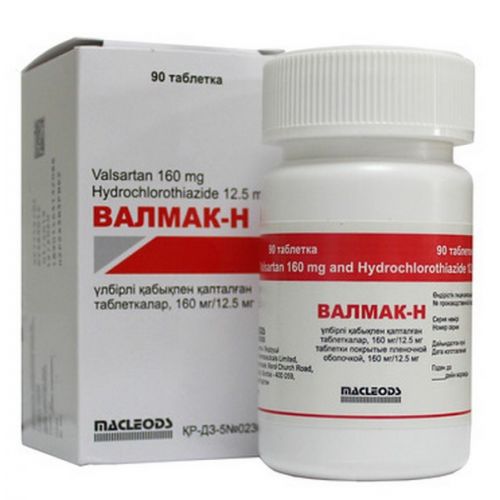
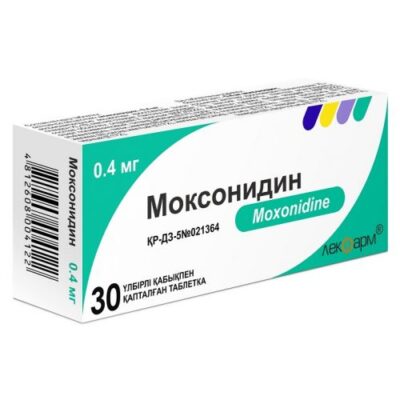
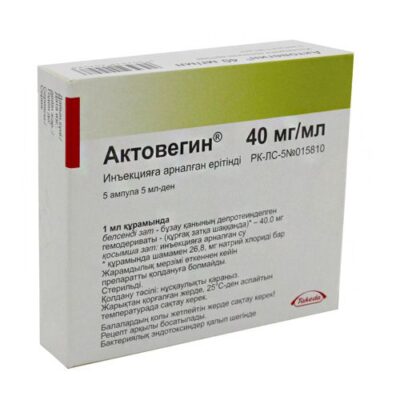
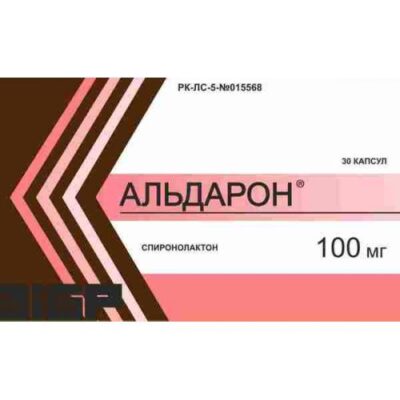
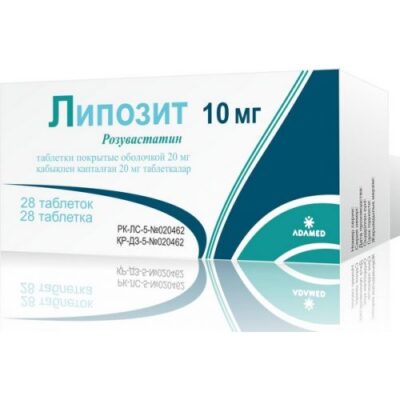
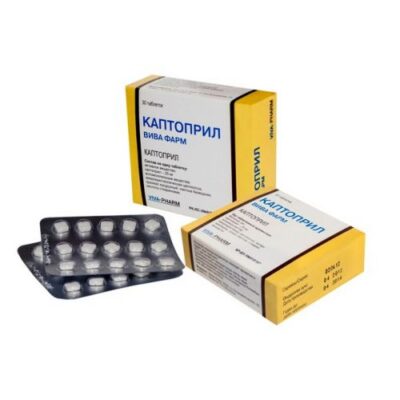
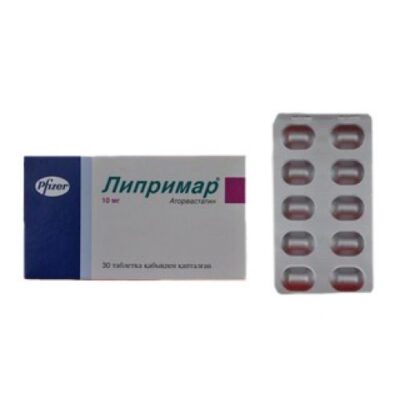
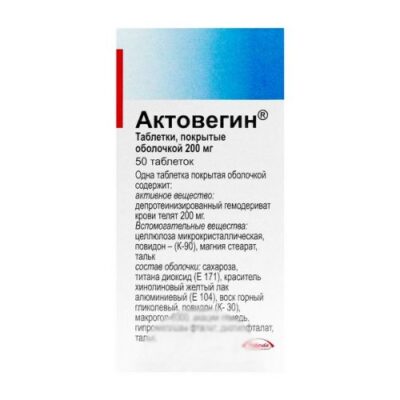
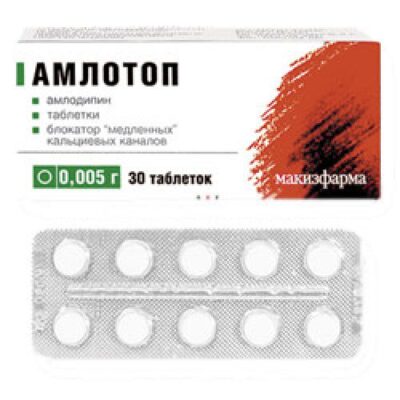
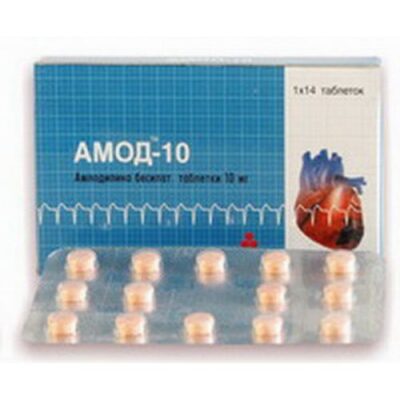
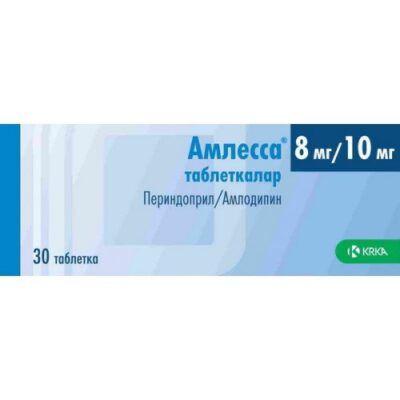






Reviews
There are no reviews yet.